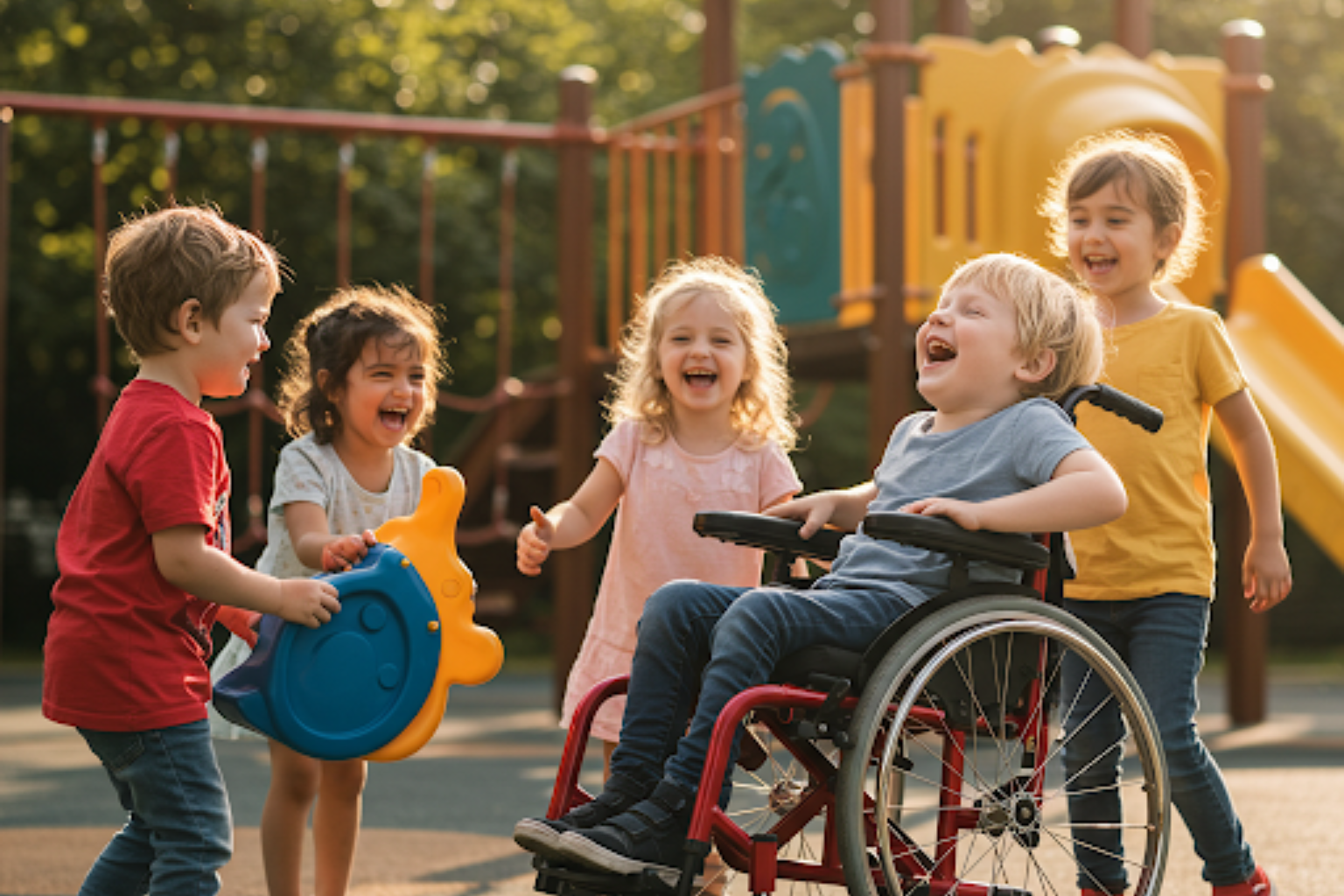In today’s increasingly globalized world, fostering an environment of inclusion and diversity in early childhood education is not only essential—it’s foundational. Children develop a sense of identity, empathy, and belonging during their earliest years, which means the lessons they learn about differences and acceptance during this stage are likely to stay with them for life.
By intentionally promoting inclusion and embracing diversity in preschools and early educational settings, educators and caregivers can help children grow into open-minded, compassionate individuals who value all people regardless of their race, gender, abilities, background, or beliefs.
1. What Is Inclusion and Why It Matters
Inclusion in early childhood education means creating an environment where every child—regardless of ability, background, language, or need—is welcomed, valued, and given the opportunity to fully participate in all aspects of learning and play.
Key Elements of Inclusion:
- Access: Ensuring all children can participate
- Participation: Encouraging active engagement in activities
- Support: Providing resources or adaptations to meet diverse needs
Inclusion benefits all children, not just those with disabilities or different backgrounds. It promotes empathy, cooperation, and critical thinking.
2. Understanding Diversity in the Classroom
Diversity refers to the presence of differences in culture, language, family structure, race, abilities, gender identity, religion, and socio-economic status. A truly diverse classroom reflects the world children live in and introduces them to a wide range of experiences and perspectives.
Examples of Diversity in Early Education:
- Children speaking different home languages
- Students with varying physical or learning abilities
- Families practicing different religions or customs
- Varied family dynamics (e.g., single parents, same-sex parents, extended families)
Exposure to these differences helps children develop an inclusive mindset early on.
3. How to Create an Inclusive Classroom Environment
Teachers and caregivers play a pivotal role in modeling inclusive behavior and designing learning spaces where every child feels like they belong.
Practical Strategies:
- Use inclusive language and avoid stereotypes
- Display diverse images and materials (books, toys, art) representing many cultures, abilities, and family types
- Celebrate a variety of holidays and cultural events
- Ensure accessible spaces for all children, including those with disabilities
- Encourage cooperative play rather than competitive or exclusive activities
Even subtle changes in tone, language, and classroom design can make a big difference in how children perceive inclusion.
4. Teaching Children to Embrace Differences
Children notice differences from a young age. The goal isn’t to ignore these differences, but to discuss and celebrate them in age-appropriate ways.
Helpful Teaching Approaches:
- Read books about diverse characters and cultures
- Encourage open conversations about questions children ask
- Use storytelling, music, and play to explore different traditions
- Practice empathy and kindness exercises
- Create opportunities for children to share about their own culture or background
By exploring diversity openly and positively, children learn that differences are not scary—they’re valuable.
5. Addressing Bias and Stereotypes Early
Bias can form at a very young age, often influenced by media, adult behavior, or limited exposure. It’s crucial to address stereotypes and biases in early education, not just react to them.
Ways to Reduce Bias:
- Point out and challenge unfair portrayals in books, shows, or stories
- Reinforce that no one is better or worse because of how they look, speak, or live
- Help children understand fairness, inclusion, and respect
- Avoid gendered roles in classroom tasks or play areas
- Encourage diverse friendships and group work
Raising awareness gently and positively helps reshape children’s understanding of fairness and inclusion.
6. Supporting Children with Disabilities or Special Needs
Inclusive education also means that children with disabilities or developmental differences are part of the same classrooms and communities as their peers.
Inclusion Practices for Special Needs:
- Adapt lessons or materials to match each child’s learning style
- Collaborate with therapists or specialists
- Use visual schedules, sensory supports, or assistive technology
- Focus on strengths rather than limitations
- Teach classmates how to interact kindly and inclusively
Inclusive classrooms teach that everyone can contribute meaningfully, regardless of their abilities.
7. Partnering with Families for Inclusion
Families play a vital role in fostering inclusion and diversity. Schools and educators should actively partner with parents and caregivers to learn about their traditions, values, and needs.
Family Engagement Ideas:
- Host cultural sharing days or “family traditions” weeks
- Send home inclusive reading materials or resources
- Ask for feedback on classroom practices
- Offer parent workshops on diversity and inclusion
When families and educators work together, children receive consistent messages of respect and inclusion at home and at school.
8. Benefits of Inclusion and Diversity for All Children
Inclusive classrooms don’t just help children from marginalized groups—they improve outcomes for everyone.
Key Benefits:
- Improved social skills and emotional intelligence
- Increased empathy, compassion, and problem-solving
- Greater confidence and self-worth
- Broader perspectives and open-mindedness
- Stronger sense of community and cooperation
Children who grow up in inclusive environments are more likely to thrive in diverse workplaces and communities later in life.
9. Challenges Educators May Face
While inclusion is essential, it can come with challenges such as limited resources, lack of training, or resistance to change. Addressing these obstacles requires ongoing support and commitment from school leadership and the community.
Overcoming Barriers:
- Advocate for professional development and inclusive curricula
- Build a supportive team approach with aides and specialists
- Create a culture of continuous improvement
- Listen to children and families and adapt practices accordingly
Inclusion is a journey—not a checklist—but every step forward makes a difference.
Final Thoughts: Planting the Seeds of Equity and Respect
Inclusion and diversity in early childhood education are not just ideals—they are actionable commitments. When we model equity, celebrate differences, and ensure every child feels valued, we lay the foundation for a more compassionate and just world.
Children are naturally curious and open to learning. By nurturing these qualities in inclusive classrooms, we empower the next generation to embrace diversity not as a challenge, but as a strength.
